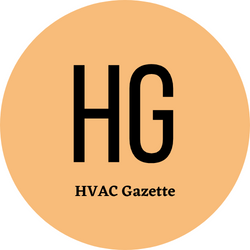HVAC (Heating and Ventilation)
by siteadmin

HVAC stands for Heating and Ventilation, Air Conditioning. More commonly, it is known as HVAC with refrigeration as an extra letter.
HVAC systems are vital in offices, homes and buildings. They help to filter pollutants and heat and cool the indoor air.
Heating
Heating and cooling are just one part of the overall system that is designed to keep you comfortable in your own home throughout the year. The quality of indoor air can be improved by ventilation, filtration and cleaning.
While systems may differ slightly, they all work in a similar way: They bring fresh air into the home through intake ducts, then distribute it to heating or cooling ducts. Finally, they push it out through the rear door.
Heat pumps can heat and cool a home using just one unit. Furnaces and Boilers produce heat by burning fossils fuels, such as propane or natural gases. Furnace Air Handlers circulate the air heated and cooled by other HVAC systems throughout your home so that it reaches all rooms at your desired temperature.
Cooling
Your HVAC cooling system pulls fresh air in from the outside, pushes it into different rooms of your building through ductwork and filters it to keep pollutants out. Newer ventilation systems are smaller than traditional ducts and can be installed without major renovations.
HVAC and air conditioners are often used interchangeably but there are differences between them. Air conditioners are only capable of cooling a space, whereas a complete HVAC offers heating and cooling. HVAC systems generate heat for a space using boilers, furnaces, or heat pumps powered by a variety of energy sources. The warmth is then distributed through ductwork or central blower systems.
Ventilation
The "V' in HVAC stands for ventilation. It is the process of bringing fresh air into an area while removing old or polluted stale air. This can be done by mechanical means, such as ductwork units and window units.
Air conditioning works by evaporating refrigerant outside and blowing the air indoors via ductwork or vents. This improves indoor air quality, by filtering out dust and allergens. It also removes VOCs.
Heat pumps, furnaces and air handlers can be used as power sources for systems depending on the climate or home design. Some homes have heat pumps that absorb and transport the energy, as well as cooling the home. Others only use air conditioners.
Thermostat
A thermostat is a vital piece of equipment that controls heating and cooling in a home. As a low voltage device that automatically adjusts temperatures, a thermostat filters air in the room by reducing moisture levels and improving air quality.
Failing thermostats could render heating and cooling systems inoperable, resulting to expensive repairs or replacements. Professional assistance should be sought when assessing a thermostat in order to avoid future expensive repairs or replaces.
The traditional thermostat consists of two metal strips bolted together and acting as a link in an electrical circuit that is connected to the heating system. As heat is introduced into a space, the strip will bend slightly. The current flowing from this circuit then jumps to terminal G of the thermostat board and signals the condenser cooling system to begin.
https://www.hvacbountifulut.com/
affordable hvac contractors bountiful
ductless mini splits bountiful ut
HVAC stands for Heating and Ventilation, Air Conditioning. More commonly, it is known as HVAC with refrigeration as an extra letter. HVAC systems are vital in offices, homes and buildings. They help to filter pollutants and heat and cool the indoor air. Heating Heating and cooling are just one part of the overall system that…
Recent Posts
- Condon Total Comfort, Inc. Offers Top-notch HVAC Services
- Clearing the Air: Duct Cleaning Alexandria Debunks Common Myths Surrounding Air Duct Cleaning
- Clearing the Dust: Duct Cleaning Louisville KY Shares Tips to Make Your Home Less Dusty
- Exploring the Drawbacks of Duct Cleaning: Insights from Air Vent Cleaning Charlotte
- Grand Prairie HVAC Service: Your Trusted HVAC Company in Texas
